Ship Motion Measurement
Measurements at full scale
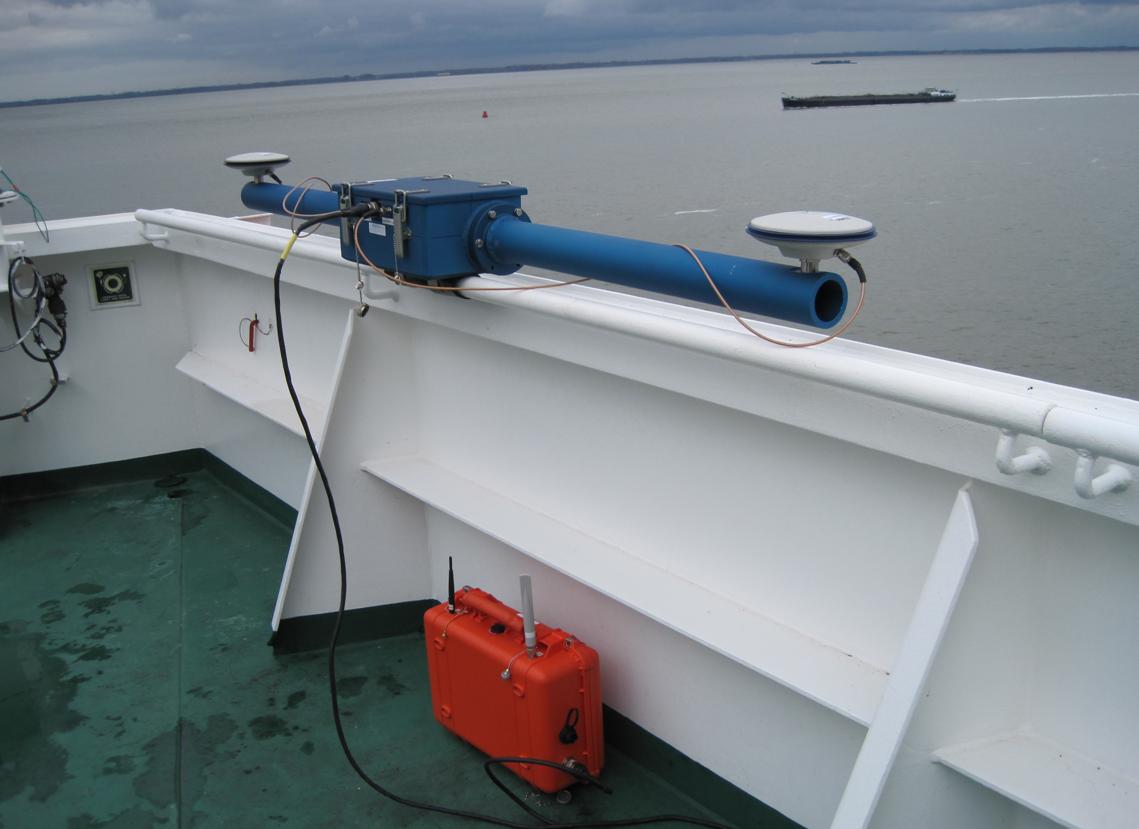
Since the beginning of 2010 Flanders Hydraulics Research possesses an accurate measurement equipment that can be installed in a short time on almost any vessel. The main purpose of this equipment is to validate the mathematical manoeuvring models which drive ship manoeuvring simulators. The advantage of measuring at full scale is that it reveals differences, such as environmental effects, which may not be picked up by mathematical models because they were derived from tests carried out at model scale. Several surveys using the equipment have already been carried out.
Measurement equipment
The equipment uses a combination of RTK GPS antennas, accelerometers and inclinometers to measure the position and orientation of the vessel in three dimensions with an accuracy upto respectively 2 cm and 0.01°. It consists of a precalibrated housing carrying two GPS antennas with seperation distance two metre, sending the measured data wireless to a laptop standing in the bridge house. Furthermore AIS-data from the ship's pilot plug are supplied to the laptop using a pilot plug splitter. During the survey the time evolution of rudder angles and machine orders are registrated manually.
Selected applications
Full-Scale Measurements on Ultra Large Container Ships sailing to the Port of Antwerp

Shipping traffic to the Belgian and Dutch ports located at the Western Scheldt estuary and on the river Scheldt follows an access channel of which the depth is restricted. As a result, deep-drafted vessels, or so-called marginal ships, cannot always sail 24 hours a day. The period in which these vessels may proceed inbound or outbound is called the tidal window. The Common Nautical Authority (CNA) calculates these tidal windows and gives permission for the vessels to proceed. As mentioned in our 17th newsletter and in our 27th newsletter, the CNA is in the process of adopting a probabilistic access policy to determine the tidal windows. In a probabilistic calculation, the assessment whether or not it is safe to sail a given trajectory is mainly based on the probability that the vessel will touch the bottom, which requires an accurate prediction of the ship motions
In order to gain information on the vertical motions of marginal ships, a measurement campaign was conducted in 2015-2016 on 8 inbound Capesize bulk carriers to the Port of Flushing (Verwilligen et al., 2018a; Verwilligen et al., 2018b). In 2018-2020 a second measurement campaign was organised, which focused on outbound Ultra Large Container Ships (ULCS) from the Port of Antwerp. Unlike the Port of Flushing, which is located at the mouth of the Western Scheldt, the Port of Antwerp is located upstream of the Western Scheldt. The shipping routes to Antwerp combine a wide and exposed coastal trajectory with straight fairways and a confined riverine trajectory presenting important curvatures
A total number of 9 full-scale measurements on ULCS to the Port of Antwerp were performed. 8 of the vessels were sailing outbound. The dimensions of the ULCS varied between 366 m and 400 m in length and between 51 m and 59 m in beam. The mean draft of the vessels was ranging between 10.0 m and 15.1 m. During the full-scale measurements, the motions of the vessel were measured in 6 degrees of freedom and the application of rudder and propeller was monitored using synchronised photo-cameras. The full-scale measurements were performed by the Flemish Pilotage and the data were provided to Flanders Hydraulics Research (FHR).
FHR together with Ghent University analysed the measurement data and combined the ship measurements with a full reproduction of the environment including bathymetry, tide, current, waves, density and AIS. A thorough analysis was performed in order to rely the different vertical motions to the determining parameters. The research focused on the analysis of squat and roll motion as these motions proved to present the most important vertical motions Verwilligen et al., 2019.
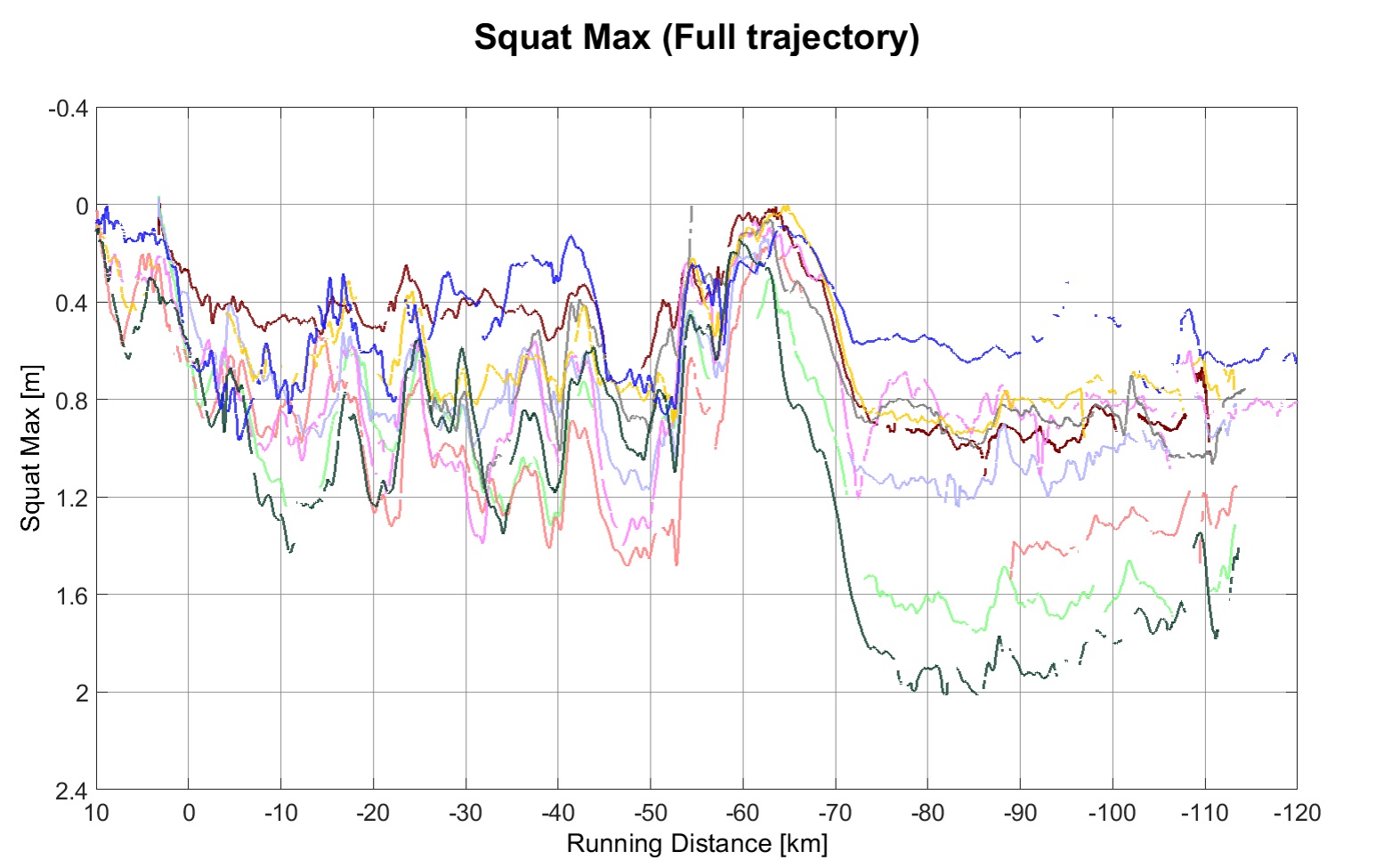
Squat motions were obtained by subtracting the steady heave and pitch motion of the vessel from the reproduced water levels and by performing a correction for draft variations due to changing water density.
The squat motions of the ULCS revealed large variations, which was partially related to the different operational conditions, such as speed and water depth, but also to the different designs and loading conditions of the vessels.
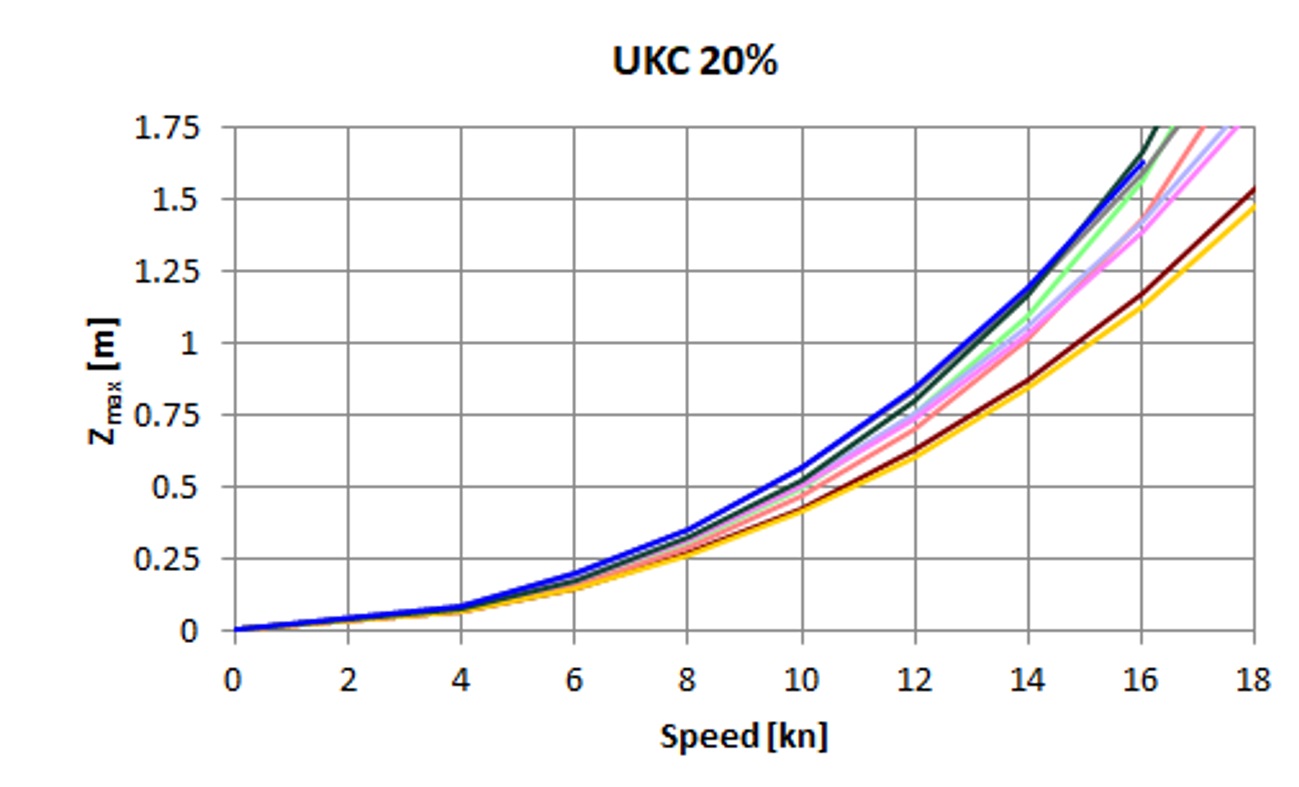
In order to distinguish the squat behaviour of the different ULCS, a formula for maximum squat was derived for each of the vessels.
For the ULCS with the most important squat behaviour, the squat was significantly larger than the values obtained with the standard squat formula as published in that MarCom WG 121 Report "Harbour Approach Channels - Design Guidelines" (PIANC, 2014), which is generally used.
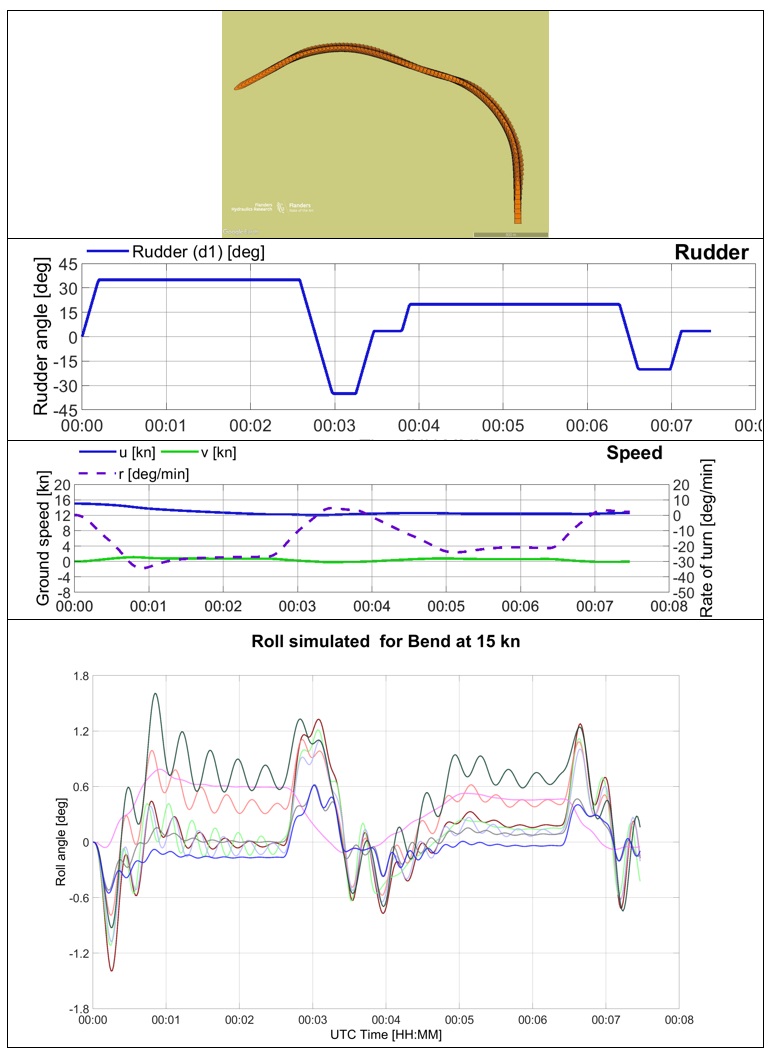
Roll motions on the Western Scheldt revealed to be a very dynamic phenomenon, mainly depending on the roll stability of the vessel on the one hand and the roll moments introduced by turning and heeling in bends, and by rudder actions and wind on the other hand.
The dynamic roll motion due to rudder actions in particular revealed to be a very significant effect. For some vessels the roll angles on straight trajectories due to rudder applications (with rudder variations close to the natural roll period of the vessel), were larger than the roll angles in bends.
A dynamic roll formula was derived for each of the vessels, simulating the effects of rudder angle, turning (and wind). The formula was applied to a standard manoeuvre corresponding to two consecutive bends with an intermediate straight trajectory.
Large variations in unsteady roll motions are believed to be related to differences in both the roll stability and the design of rudder, propeller and hull of the vessels.
Survey of a bulk carrier in the Port of Dunkirk
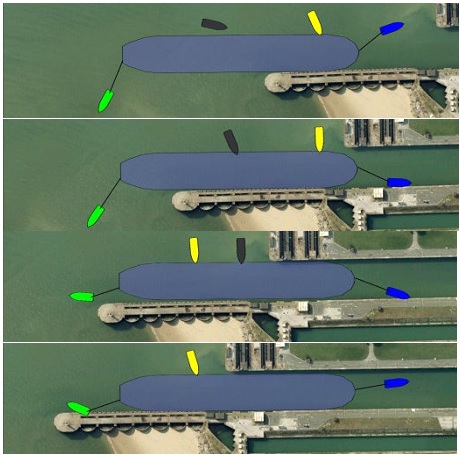
On request of the Port Authority of Dunkirk, the motions of the capesize bulk carrier MV Cape Aster (292 m x 45 m x 14.2 m) were measured on a trip departing from the Western port of Dunkirk at 11:00 am and mooring at the Arcelor Mittal plant in the Eastern port of Dunkirk at 08:30pm.
The survey was carried out with support of the Dunkirk Pilotage and the main objective was to study the behaviour of a ship during the passing of the Charles de Gaulle Lock in the Eastern port of Dunkirk. The hydrodynamic effects while entering the lock with a ship of maximum dimensions with respect to the actual regulations were studied in detail.
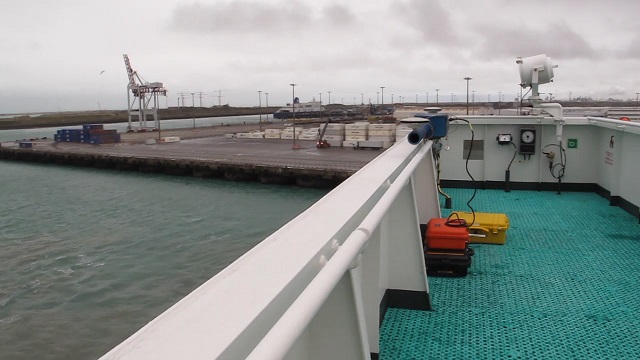
The motions of the vessel were recorded in 6 dimensions (3 translational and 3 rotational) at high frequency. During the survey, the rudder angle, propeller rate of turn and the forces applied by tugboats were also captured. A survey carried out at full scale is always interesting because it reveals differences which cannot be predicted from model scale. For example, effects from wind and forces exerted by tugs may be quite different in reality.
The data from the full-scale measurements were used for the validation of an improved mathematical model. Details can be found in the paper entitled Hydrodynamics of a ship while entering a lock, which was presented at the Third International Conference on Ship Manoeuvring in Shallow and Confined Water. Details of the behaviour of the ship while entering the Charles de Gaulle Lock can be found in the paper entitled Lock manoeuvres: practical cases in Europe and Panama.
Survey to validate the mathematical manoeuvring model of a CEMT Class IV inland vessel
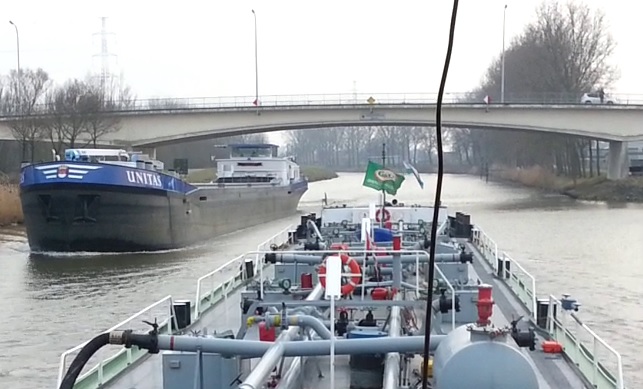
In order to validate the mathematical manoeuvring model of a CEMT Class IV inland vessel which was derived from comprehensive model experiments, full-scale measurements of the inland vessel MT Elise (105 m x 9.5 m x 2.6 m) have been carried out on the Lys Diversion Canal. The ship positions were measured with an accuracy of up to 2 cm and the application of rudder and propeller during the passage of the bend of Nevele were registered. In post-processing, the bottom profile and the water level were taken into account so that the effect of under keel clearance and the proximity of banks can be studied in detail.
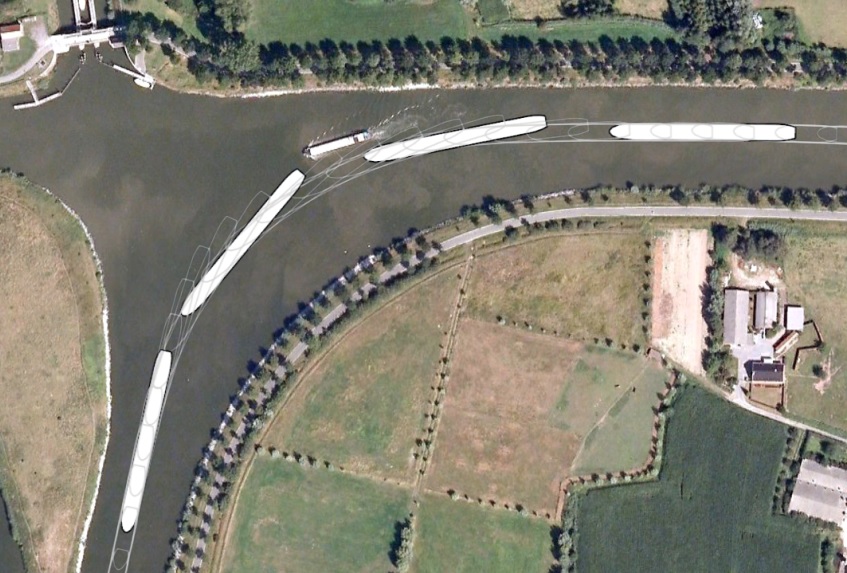
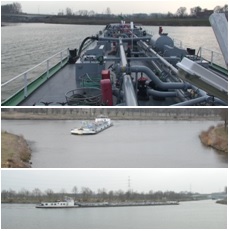
During the lock passage at Sint-Baafs-Vijve, the water level variation in the lock was logged at six locations in order to analyse the slope of the water level during the filling of the lock. The measured slope of the water level was compared with the trim angle of the MT Elise in order to validate the numerical calculations of lock filling which are in use at Flanders Hydraulics Research. Particular attention was paid to comparing the longitudinal forces on a ship during this procedure.
Survey of the entry of a bulk carrier in the Westlock of Terneuzen
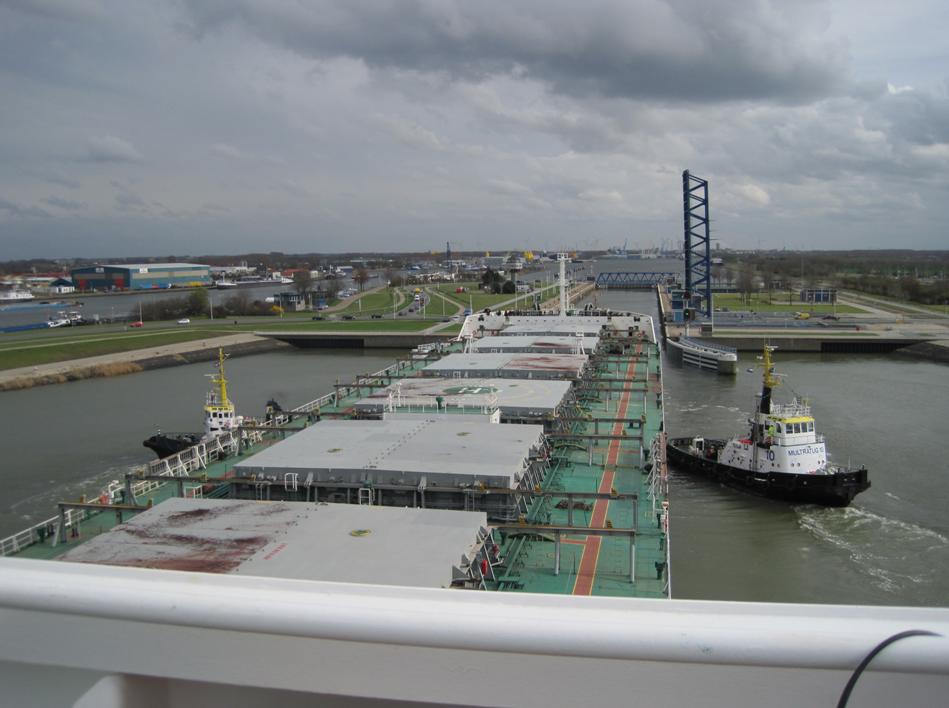
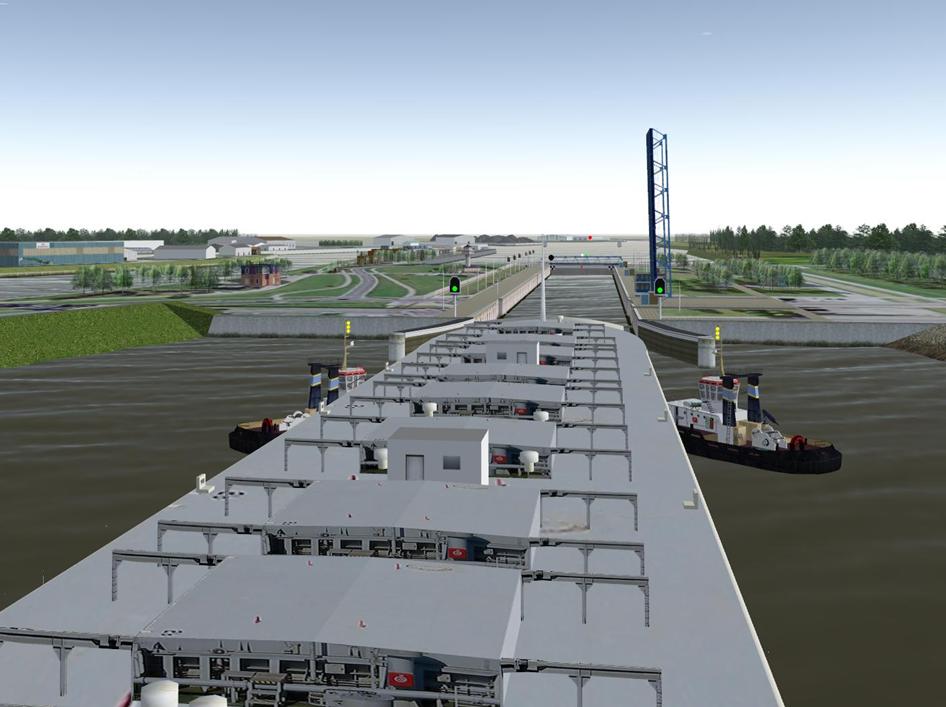
A Kamsarmax bulk carrier with a breadth of 37 m was followed entering the Westlock in Terneuzen characterised by a total breadth of 40 m and an available breadth of 38 m (due to the fendering system). As one can imagine this manoeuvre results in large lock effects when the ship presses the water out of the lock between the small gaps between the ship and the lock structure.
The entrance of Kansarmax bulkcarriers to the West lock in Terneuzen was simulated at FHR in 2007 for determining the maximum ship dimensions to whom the West lock is limited. The survey supplies FHR with validation data for the mathematical model of lock effects present in the ship manoeuvring simulators.
